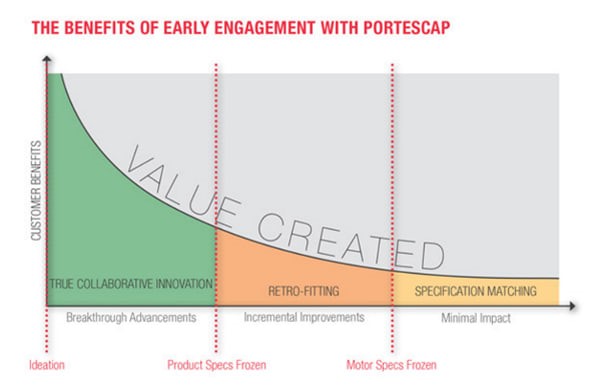Miniature motors may be tiny, but their importance to key medical and industrial applications can’t be overstated. From powering surgical power tools and infusion pumps to seat actuation, collaborative robots, and LiDAR, these technologies help to maintain and improve our daily lives. However, selecting the ideal mini motor for an application isn’t as easy of a task as you might think. Engineers must wrestle with unique needs, challenging environments, industry regulations, strict testing requirements, multiple iterations, and constantly evolving design needs – and this is in addition to having a deep-seated understanding of each mini motor technology and its associated characteristics.
Given the many nuances that go into selecting a motor technology, here are a few of the top elements to consider:
Motor Accuracy & Precision. Believe it or not, there is a difference between accuracy and precision in a motion control system! Accuracy is the ability of the motor to achieve a specific rotational position, while precision is its ability to consistently repeat the desired motion. If your application requires highly accurate feedback regarding motor speed and positioning, stepper motors such as disc magnet steppers and linear digital actuators might be an optimal choice, given they’re constructed to provide positioning accuracy. Brushless DC and brush DC motors, however, will require an encoder to track and control the position of the rotor.
Motor Efficiency. The efficiency of an electric motor can be defined as the ratio between the mechanical power output and the electrical power input, with mechanical output power always being lower than electrical input power due to energy losses experienced during the electrical to mechanical conversion. Different motor technologies can achieve an application’s required efficiency levels, with brush DC motors being well-suited for battery-powered applications and brushless DC motors being optimal for high efficiency in high-speed applications. Keep in mind that many of the characteristics described here also impact a motor’s efficiency (including the motor’s speed, footprint, and output torque).
Motor Footprint. Do you know the amount of space available in your application for a motion control system? While each type of motor technology is available in specific diameters and length options, you’ll need to know the exact amount of space that’s available for your motor before making the final selection; from there you can confirm which mini motor technology is available in a diameter and length that will fit in the intended space. Pro tip: application portability is another element impacting the footprint of your motor. If your application is stationary, you usually have more flexibility in the size/weight of the motor, while portable applications do not have as much flexibility and must prioritize these features – especially for battery-powered devices.
Motor Lifetime. Determining the lifetime of your motion system is a key consideration for motor selection; you can estimate this by defining the number of operating hours per day and duty cycle of the motor or by defining the number of cycles per day and times per cycle the motor will be operating. Keep in mind that mini motors do not usually run continuously in an application! Brushless DC and stepper motors are ideal for applications requiring long lifetimes, given that they are electronically commutated and thus do not wear over time. The same can’t be said for brushed DC motors, which have a mechanical commutation system that does experience wear over time. The type of bearing used in the motor also has bearing (pun intended) on the motor’s lifetime. Ball bearings are well-suited for long lifetimes and typically provide more than 10,000 hours of life; conversely, sleeve bearings usually offer only a few thousand hours of life.
Motor Output Torque. Torque is the amount of rotational force generated by a motor during its operation and includes three key components: the magnet, the winding, and the flux path. Torque requirements are application-dependent, with a focus on both continuous torque and peak torque for a limited time during operation. Depending on your application, brush DC, brushless DC, and stepper motors may all meet your torque requirements, as they are characterized by differing max continuous output torque capabilities; adding a gearbox to your motor can also help you achieve a higher output torque.
Motor Speed. The motor speed is the magnitude of the motor shaft’s rotational velocity, which dictates how fast the axis will rotate. If your application requires high speeds, consider brushless DC (BLDC) motors, as these are well-suited for higher-speed operations. Coreless brush DC motors can also run at higher speeds, but brushes will wear quicker, resulting in a shorter lifespan. In contrast, electronically commutated stepper motors are more suited to run at lower speeds.
And there you have it! We’ve covered key specifications that must be taken into consideration when selecting an ideal motion control solution for your application, though it’s imperative to realize that each application will prioritize the above factors differently; this is why collaborating with a trusted motion control supplier from the outset is essential.
As you can see from the graph above, working together with a supplier like Portescap from the concept stage (or even as the first ideas are being bounced around), future design hours are reduced, overall development time is cut by months, and ultimately the supplier can deliver a customized and optimized product that meets – and exceeds – all your motion control needs. Remember – the earlier you bring in a trusted motor provider into the process, the better the results.
Authored Article By: Katie Guiler, Global Content Manager, RS Components









